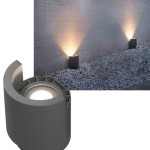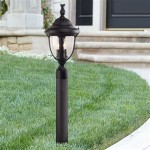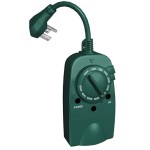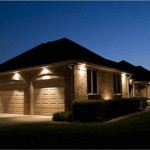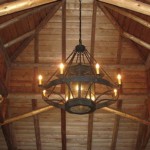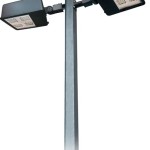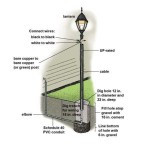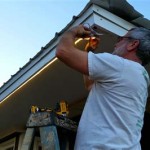Outdoor Light Fixture Mounting Plates: A Comprehensive Guide
Outdoor light fixtures enhance security, ambiance, and curb appeal. A crucial, often overlooked component of a successful outdoor lighting installation is the mounting plate. This seemingly simple piece of hardware serves as the foundation, ensuring the fixture is securely attached and properly positioned. Understanding the types, materials, and installation best practices of outdoor light fixture mounting plates is essential for a safe, long-lasting, and aesthetically pleasing result.
Types of Outdoor Light Fixture Mounting Plates
Outdoor light fixture mounting plates come in various designs to accommodate different fixture styles and mounting surfaces. Common types include:
Standard Round/Square Plates: These are the most common type, typically used for wall-mounted fixtures. They feature pre-drilled holes for easy installation and come in various sizes to match the fixture base.
Rectangular Plates: Often used for larger fixtures or those with unusual shapes, rectangular plates offer more surface area for secure attachment. They are also suitable for fixtures with multiple mounting points.
Crossbar Plates: Designed for post-mounted fixtures, crossbar plates provide a stable platform for attaching the fixture to the top of a post. They usually feature a center hole for the post and multiple holes for securing the fixture.
Adapter Plates: These plates are used to adapt fixtures to different mounting situations. For example, an adapter plate might be used to mount a wall fixture onto a post or to convert an existing electrical box to accommodate a new fixture.
Specialty Plates: Certain outdoor lighting applications require specialized mounting plates. These might include plates designed for sloped surfaces, recessed lighting, or fixtures with unique mounting requirements.
Materials and Durability
The material of the mounting plate significantly impacts its durability and resistance to the elements. Common materials include:
Galvanized Steel: This is a cost-effective and durable option, offering good resistance to rust and corrosion. Galvanized steel is suitable for most outdoor environments.
Stainless Steel: Offering superior corrosion resistance compared to galvanized steel, stainless steel is ideal for coastal areas or environments with high humidity. It is a more expensive option but provides long-lasting performance.
Aluminum: Lightweight and corrosion-resistant, aluminum is a good choice for larger fixtures where weight is a concern. It is also suitable for coastal environments.
Die-cast Aluminum: This material provides extra strength and durability compared to standard aluminum, making it suitable for heavier fixtures and harsher weather conditions.
Importance of Proper Installation
Proper installation is crucial for the safety and longevity of the outdoor lighting fixture. A poorly installed mounting plate can lead to instability, water damage, and even electrical hazards.
Key Considerations for Installation
Several factors contribute to a successful mounting plate installation:
Secure Mounting Surface: Ensure the mounting surface is structurally sound and capable of supporting the weight of the fixture. Use appropriate anchors and fasteners for the specific surface material (e.g., wood, brick, concrete).
Weatherproofing: Properly seal any gaps or openings around the mounting plate to prevent water intrusion. Use silicone sealant or weatherproof gaskets to create a watertight seal.
Electrical Connections: Ensure all electrical connections are made securely and in accordance with local electrical codes. Use weatherproof wire connectors and appropriate conduit to protect the wiring from the elements.
Leveling: Use a level to ensure the mounting plate is perfectly horizontal. This will ensure the fixture hangs straight and looks aesthetically pleasing.
Choosing the Right Mounting Plate
Selecting the appropriate mounting plate depends on several factors:
Fixture Type and Weight: Heavier fixtures require more robust mounting plates with larger surface areas and stronger materials.
Mounting Surface: The type of mounting surface (e.g., wall, post, ceiling) will dictate the style of mounting plate required.
Environmental Conditions: Consider the local climate and choose a material that can withstand the elements, such as rain, snow, wind, and salt spray.
Maintenance and Troubleshooting
Regular inspection and maintenance of the mounting plate can prevent issues and ensure the long-term performance of the outdoor lighting fixture.
Periodically check for signs of corrosion, loose screws, or damage to the mounting plate. Tighten any loose screws and replace any damaged components promptly. Regularly clean the fixture and mounting plate to remove dirt and debris that can trap moisture and accelerate corrosion.

Replacing An Outdoor Light Fixture

Replacing An Outdoor Light Fixture

Mounting Light Fixtures Fine Homebuilding

Replacing An Outdoor Light Fixture

Surface Mount Round Bracket For Outdoor Landscape Lighting Fixtures

Replacing An Outdoor Light Fixture

Advice On T Out Exterior Light Fixture Where Pancake Box Sticks Too Far Greenbuildingadvisor

2sets 4in Light Fixture Mounting Bracket Universal Crossbar For Lighting Ceiling Fan Plate Com

2 Packs Ceiling Light Fixture Mounting Bracket 4 Inches Diameter Universal Crossbar Steel Plate With Ground For Mount Wall Close To Chandelier Check Out Today S

Ceiling Light Fixture Mounting Bracket Upgraded Version Fan Universal Parts With S Swivel Junction Box Adapter Crossbar For Com
